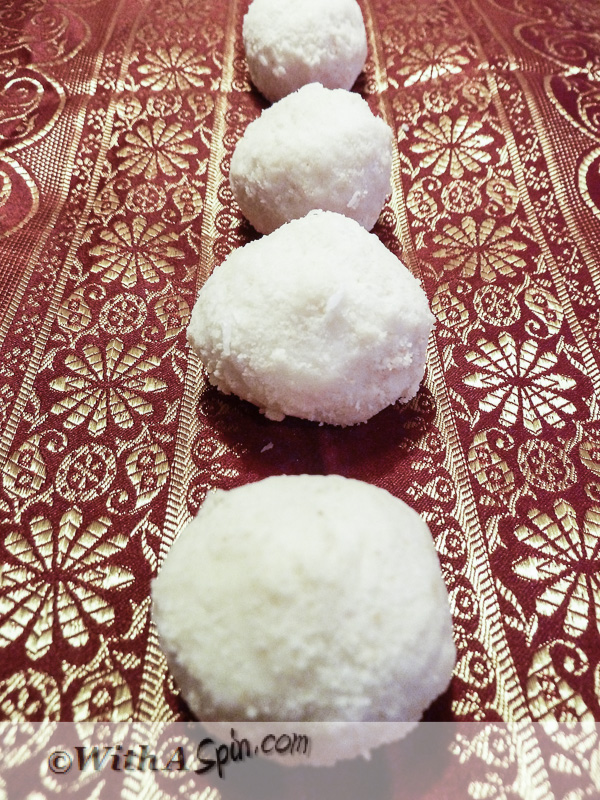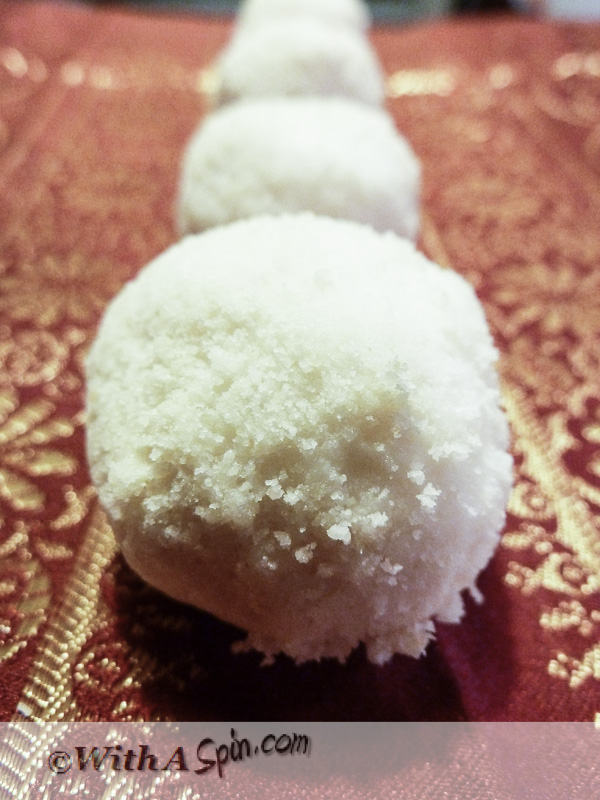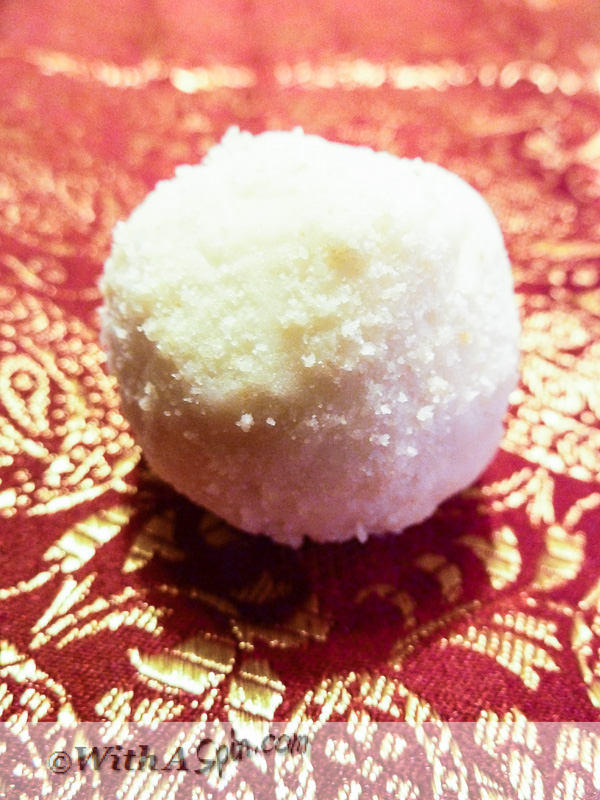 I have long been contemplating what the opening recipe should be for the “from scratch” section of the blog. Should it be rice or fish dish since that’s the staple for many in the Indian sub continent or should it be a sweet dish. At the end, as you can see the winner is a dessert item. Bengalis are widely known for their sweets! Particularly those made of chana or home made fresh cheese. Sweets play very important role for all Bengalis regardless of religion and region. It is customary to distribute sweets during festivals, social and religious ceremonies. Besides the many festivals, they will find a reason many times in a year to distribute sweets – a baby is born, let’s distribute sweets; a courtship is in the happening, let’s distribute sweets; someone passed an exam, let’s get some sweets and distribute, someone just opened a new business… You get the idea? No hospitality is ever complete without serving sweets or “mishti” as Bengalis call it.
I have long been contemplating what the opening recipe should be for the “from scratch” section of the blog. Should it be rice or fish dish since that’s the staple for many in the Indian sub continent or should it be a sweet dish. At the end, as you can see the winner is a dessert item. Bengalis are widely known for their sweets! Particularly those made of chana or home made fresh cheese. Sweets play very important role for all Bengalis regardless of religion and region. It is customary to distribute sweets during festivals, social and religious ceremonies. Besides the many festivals, they will find a reason many times in a year to distribute sweets – a baby is born, let’s distribute sweets; a courtship is in the happening, let’s distribute sweets; someone passed an exam, let’s get some sweets and distribute, someone just opened a new business… You get the idea? No hospitality is ever complete without serving sweets or “mishti” as Bengalis call it.  It’s very hard to translate and describe the literal inner meaning of this delicacy. If I attempt to translate, it would be something like captivating heart, literally. The soft, luxurious, authentic sweet is really something to fall for and lose your heart over. The mild sweet taste with a hint of rose water is out of the world. Many uses saffron and pistachios these days to garnish but I have kept it in its original form in this recipe. No modern ingredient or décor to make it prettier for the photos. Just mawa or cheese dust to garnish as our past generations has done for many many years. Pranhara is relatively easier to make than other popular Bengali sweets such as rosogolla, chamcham, pantua(I plan to introduce those to my readers at some point in the future). I chose pranhara as the firsst sweet because of its distinct taste and also because pranhara is more forgiving and provides a lot more room to recover if something goes wrong.
It’s very hard to translate and describe the literal inner meaning of this delicacy. If I attempt to translate, it would be something like captivating heart, literally. The soft, luxurious, authentic sweet is really something to fall for and lose your heart over. The mild sweet taste with a hint of rose water is out of the world. Many uses saffron and pistachios these days to garnish but I have kept it in its original form in this recipe. No modern ingredient or décor to make it prettier for the photos. Just mawa or cheese dust to garnish as our past generations has done for many many years. Pranhara is relatively easier to make than other popular Bengali sweets such as rosogolla, chamcham, pantua(I plan to introduce those to my readers at some point in the future). I chose pranhara as the firsst sweet because of its distinct taste and also because pranhara is more forgiving and provides a lot more room to recover if something goes wrong.  Although I am not promoting frozen food, my busy life calls for a lot of freezing. Like any Bengalis, I like to serve sweets when I have guests and friends over. I have frozen pranhara many times for as long as three months. Once thawed in the refrigerator, the taste does not deteriorate but the texture hardens a little. If you are time pressed like I am, you are welcome to freeze them airtight in a ziplock bag or container and wow guests when they show up in a short notice. Let me if you would try this luscious sweet and when you do, don’t forget to let me know how you liked it.
Although I am not promoting frozen food, my busy life calls for a lot of freezing. Like any Bengalis, I like to serve sweets when I have guests and friends over. I have frozen pranhara many times for as long as three months. Once thawed in the refrigerator, the taste does not deteriorate but the texture hardens a little. If you are time pressed like I am, you are welcome to freeze them airtight in a ziplock bag or container and wow guests when they show up in a short notice. Let me if you would try this luscious sweet and when you do, don’t forget to let me know how you liked it.
- 4 Cups whole milk
- 4 tablespoons white vinegar or strained lemon juice
- ½ Cup sugar
- 1 Cup dry powdered milk
- 3-4 tablespoons butter
- 3-4 drops of rose water
- Steps to make Chana (Ricotta cheese):
- Line a colander or sieve with a large piece of cheesecloth that has been folded 3-4 times. Place the lined colander or sieve over a large bowl or sink.
- Boil milk in a large thick-bottomed saucepan over medium high heat. Stir occasionally, scraping the pan bottom, to avoid scorching.
- Mix vinegar with 4 tablespoon of water and add to boiling milk.
- Look out for curd-mass to separate from greenish water. As curds rise and come to the surface stop the stove.
- Run a spatula along the bottom of the pan occasionally to free up any stuck curds.
- Gently begin to ladle curds into the prepared sieve or colander.
- Wrap the cloth around the cheese and rinse under a running water without pressing the cheese.
- Gather the edges of the cloth, tie or fasten into a knot and allow to cool and drain for 2 hour minimum.
- Steps to make mawa(cheese dust):
- Heat butter in a nonstick pan over medium low heat.
- Once butter melts, add the dry powdered milk.
- Stir constantly to form a coarse dust and until slightly golden and aromatic. Set aside.
- Steps to make pranhara:
- Knead the cheese on a clean surface with your heel of the hand by pressing it across the surface until smooth and fluffy and no trace of grains. Knead about 5-6 minutes.
- Collect all the cheese and divide them into two parts.
- Mix sugar and cheese dust(Set aside some for garnish) with one part cheese and cook in low heat stirring constantly, scrapping the pan bottom. Use a thick bottomed or non-stick pan.
- Cook until the mixture is very sticky and a mass pulls away from the bottom and sides of the pan.
- Remove from heat. Let cool.
- Mix the rose water, second portion of the raw cheese and knead till smooth.
- Divide into even portions to make smaller bite size balls.
- Garnish with cheese dust or mawa.
Store cheese in an airtight container and refrigerate if you not using immediately. It's best to use within a few days.
An alternate way of making mawa : Cook chana in low heat until it changes color to slightly golden.
Cool completely and grind in a food processor to a coarse dust.
Step 1 of “how to make pranhara” can also be achieved by using a food processor/blender instead of kneading by hand.


Thank you. Besides the recipe, I really enjoyed your English. We don’t see many people with clean flawless English; your article is an exception. I will try the recipe for this heart captivating dessert.
Thank you so much for your compliment. Looking forward to hearing back how the recipe turned out for you. Cheers.